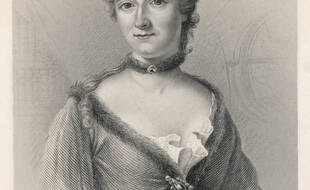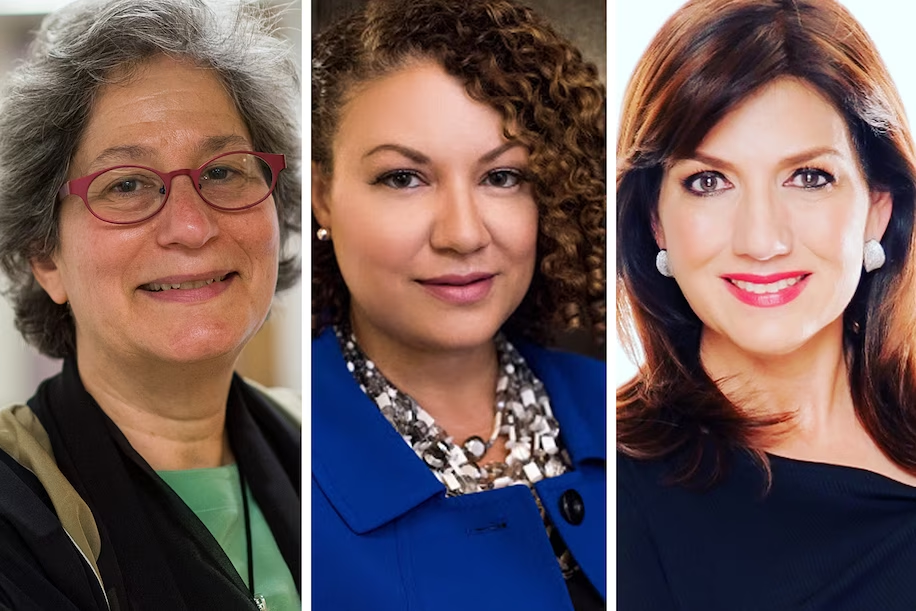
Émilie du Châtelet est née en 1706. — MARY EVANS/SIPA
Émilie du Châtelet, 1706-1749: companion of the philosopher Voltaire, she was the author of the work “Institutions de physique” published in 1741 and originally intended for her son. This work was a survey of the knowledge of the time on atmospheric sciences and it created a polemic with the secretary of the Academy of Sciences, an institution forbidden to women.
Claudine Picaret, 1735-1820: is considered the first female meteorologist, known for her weather observations. She took pressure readings three times a day between 1785 and 1787 for her husband, director of the botanical garden of Dijon. She translated numerous works and wrote others in the fields of physics, chemistry and geology.
Arlette Vassy-Tournaire, 1913-2000 : researcher at the Center national de la recherche scientifique and specialist in atmospheric physics. She is particularly known for her discoveries on atmospheric ozone and the absorption of UV rays. In 1968, she directed the research laboratory on the upper atmosphere.
Florence Van Straten, 1913-1992: famous meteorologist of the American army, she became, from 1946, responsible for the development of meteorological instruments such as the rocket sounder or the drifting weather buoy used by the American army
Jacqueline Auriol, 1917-2000: wife of French President Vincent Auriol, she was the first European to cross the Wall and was particularly interested in weather conditions, the cause of most airplane accidents. She was the first woman president of the Meteorological Society of France.
Joanne Simpson, 1923-2000: the first woman to specialize in thunderstorms and to obtain a doctorate in meteorology in the United States. She taught at the University of New York to train future meteorologists for the U.S. Army during World War II. As a researcher emeritus at NASA, she published numerous studies on tropical cyclones and developed the first numerical model to simulate the life of a cloud using data collected during seaplane flights.
Within the World Meteorological Organization, women also occupy an important place. They are for example :
Sue Barrel, originally from Australia, she has a doctorate in astronomy, a bachelor’s degree in physical sciences and a degree in meteorology. She is Vice-Chair of the WMO Commission for Basic Systems and Chair of the Inter-Commission Coordination Group for the WMO Integrated Global Observing System of Systems.

Barbara Tapia, originally from Chile, has a Bachelor’s degree in Meteorology and a Master’s degree in Management and Public Policy. She is based at the Pacific Regional Meteorological Centre on Easter Island and is Vice-Chair of the WMO Commission for Climatology.
Sri Woro Budiati-Harijono, originally from Indonesia, holds a PhD in atmospheric science and was the President of the WMO South West Pacific Regional Council before becoming an advisor to the Minister of Transport of the Republic of Indonesia.
Nadia Pinardi, from Italy, has a PhD in applied physics and is co-chair of the Joint Commission for Oceanography and Marine Meteorology, which is jointly operated by WMO and the Intergovernmental Oceanographic Commission of UNESCO.
Vida Auguliene, a native of Lithuania, after graduate studies at the University of Vilnius, is Director of the Lithuanian Hydrometeorological Service, Permanent Representative of Lithuania to WMO and Vice President of the WMO Regional Council for Europe.
Agnes Kijazi, from Tanzania, holds a Bachelor’s degree in meteorology, a Master’s degree in environmental sciences and a PhD in meteorology, and is elected to the WMO Executive Council.
Laura Furgione, from the United States, holds a Bachelor of Science degree in Atmospheric Science and a Master of Public Administration degree. She is the Deputy Director of the National Weather Service and the U.S. Permanent Representative to the WMO.



Comment here